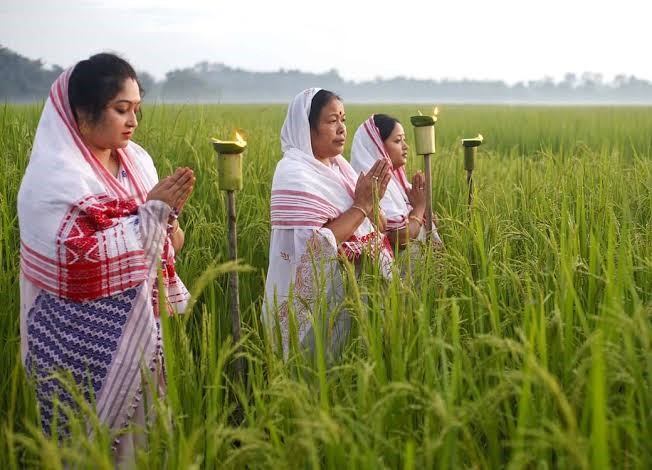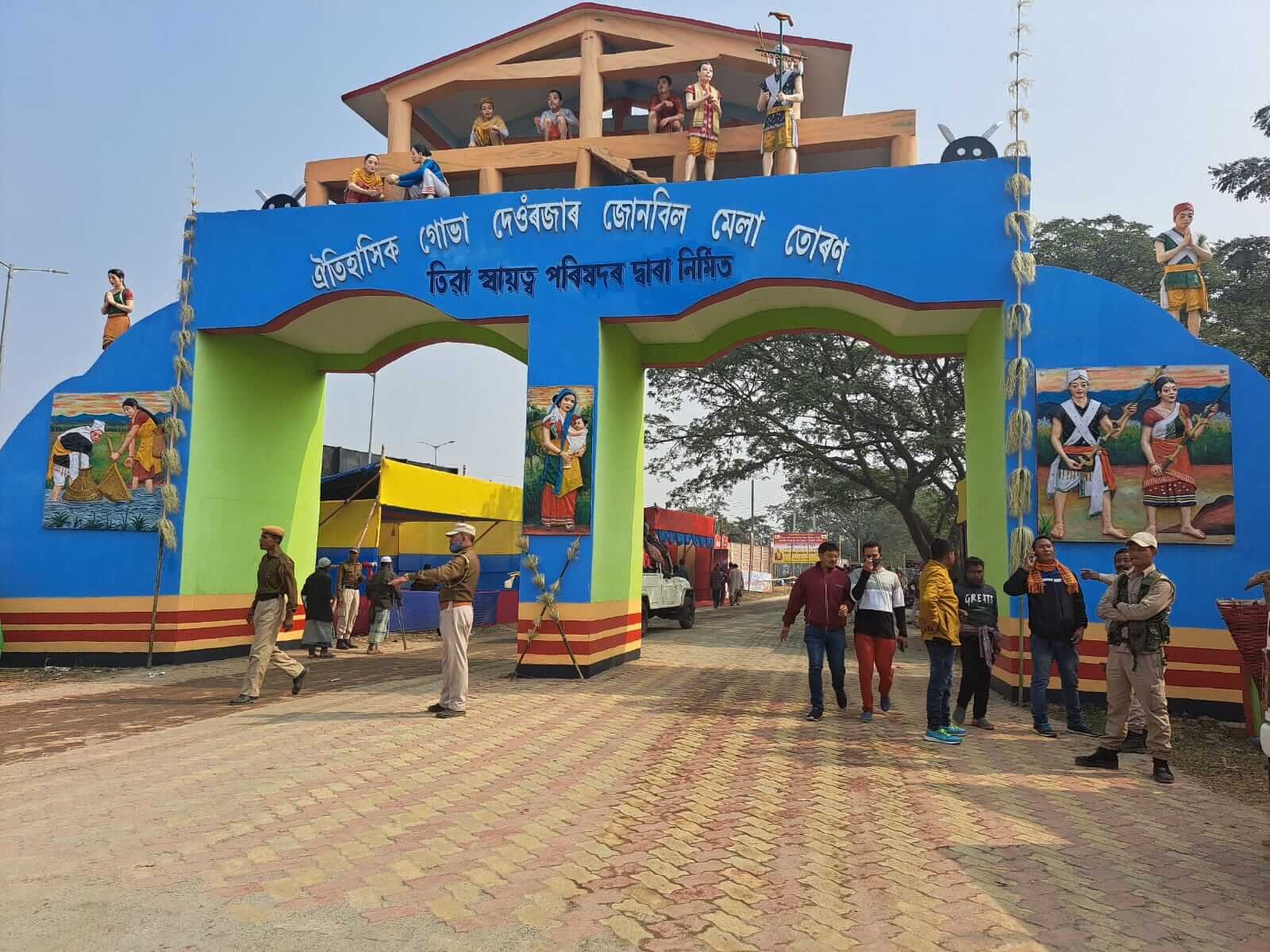Kati Bihu, also known as Kongali Bihu, is an important festival in Assam celebrated in mid-October. Unlike the cheerful Rongali Bihu and Bhogali Bihu, Kati Bihu is simpler and marks the end of sowing and the beginning of the growing season for crops.
Historical Significance
1. Origin of the Name
The name ‘Kongali’ Bihu reflects the hardships faced during this period, with ‘Kongali’ meaning poverty-stricken. Unlike other Bihu festivals that are marked by feasts and merriment, Kati Bihu symbolizes simplicity, scarcity, and restraint.
2. Agricultural Importance
Kati Bihu coincides with a critical phase in agriculture—paddy crops are in the field but not ready for harvest. This time brings uncertainty and tension as farmers anxiously wait, hoping for favorable weather and a good yield. The festival encourages patience, reminding people that the fruits of their labor will come in time.
3. Connection to the Changing Seasons
Falling in mid-October, Kati Bihu marks the shift from monsoon to cooler autumn and prepares communities for the upcoming winter. It is a period of transition, where households reflect, offer prayers for the protection of crops, and mentally prepare for the challenges of the colder months ahead.
Rituals and Traditions of Kati Bihu

Lighting of Earthen Lamps (Saki)
People light small earthen lamps in rice fields, granaries, and under sacred trees, especially the Tulsi (basil) plant. These lamps symbolize the hope for a healthy crop and are believed to ward off evil spirits. As they light the lamps near the Tulsi plant, many chant the folk prayer “Tulsi barahe barhim,” invoking blessings for the household and crops.
Fasting and Prayers
Some families observe fasting during Kati Bihu as a gesture of patience and faith, waiting for better days when the crops are ready for harvest. Nighttime prayers are offered for the well-being of ancestors and the prosperity of the household, reinforcing spiritual strength during this lean season.
The Role of Cattle
Cattle are highly valued in rural Assam, and their importance in farming is acknowledged during Kati Bihu. Small rituals are held to honor cattle, showing gratitude for their contribution to agricultural activities, as they play a key role in ensuring a successful harvest.
The Cultural and Spiritual Aspects
Community Bonding
Even though Kati Bihu is simple and modest, it plays an important role in bringing people together. Families and neighbors come together to light lamps, offer prayers, and perform rituals, strengthening social ties and fostering a sense of unity.
A Festival of Hope and Patience
Kati Bihu teaches valuable life lessons of patience and humility, reminding people to stay grounded and trust the process of nature. Unlike festivals centered on feasts or grandeur, it emphasizes spirituality over materialism. The rituals reflect gratitude for nature’s gifts and express hope for a bountiful harvest in the future, encouraging resilience through tough times.
Folk Songs and Dances (Though Minimal)
While Kati Bihu lacks the lively dances and music associated with Rongali Bihu, folk elements are not entirely absent. In certain villages, people still sing soft folk songs, celebrating the cycle of life and nature, though the overall tone remains modest and reflective.
Regional Variations
Differences Across Assam
The way Kati Bihu is celebrated varies slightly across regions. In urban areas, the rituals are often more symbolic, with families lighting lamps near Tulsi plants and offering prayers at home. On the other hand, rural communities continue to follow traditional practices more closely, such as placing lamps in fields and performing rituals to honor cattle, reflecting their deep connection to agriculture.
Influence of Religion
In some regions, Vaishnavite customs have blended with Kati Bihu traditions. These areas incorporate additional prayers and rituals dedicated to Vishnu, aligning the festival with the Bhakti movement’s spiritual practices, adding a devotional layer to the celebration.
Kati Bihu in the Modern Era
Challenges in Urban Life
With urbanization spreading across Assam, many people no longer depend on farming. However, the spirit of Kati Bihu lives on, with families continuing to observe the rituals in symbolic ways—like lighting lamps at home or on balconies. The festival now serves as a way for urban dwellers to stay connected to their cultural roots, even without direct involvement in agriculture.
Environmental Impact and Relevance
Kati Bihu’s customs, such as lighting lamps under trees and offering prayers to nature, resonate with modern environmental awareness. These rituals promote respect for the environment, encouraging sustainable practices. In many ways, the values of conservation embedded in Kati Bihu align with today’s environmental movements, reminding people to care for the natural world and practice gratitude for its resources.
Conclusion
Kati Bihu is much more than a festival; it’s a reflection of patience, humility, and hope rooted in Assam’s agrarian culture. Unlike the more celebratory Bihu festivals, it emphasizes simplicity, reminding us of the value of gratitude during times of scarcity. Whether through lighting lamps, offering prayers, or honoring cattle, the traditions of Kati Bihu reflect a deep connection to nature and community.
In an evolving world, Kati Bihu continues to adapt while preserving its core message: trust in the cycle of life and stay resilient through challenges. As environmental movements grow and urban lifestyles take over, this festival remains relevant by promoting mindfulness, sustainability, and unity, encouraging us to cherish both nature and tradition.












